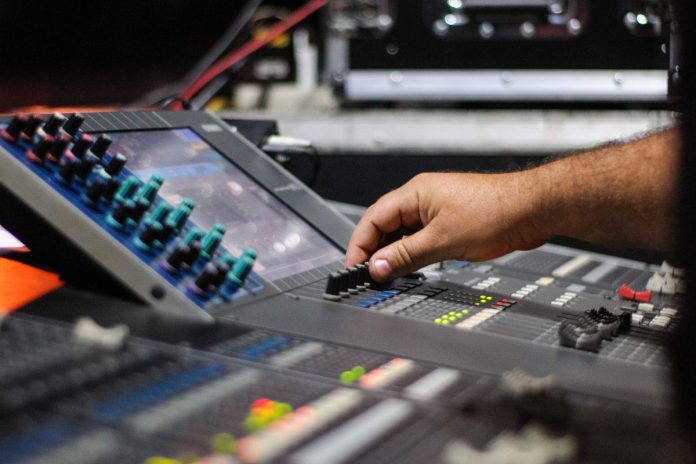Embedded systems, as the name suggests, cooperate with other larger systems, are designed for specific tasks, and frequently may have real-time processing requirements. An interesting application of embedded systems is in audio processing and control, which happens to be widely used in today’s generation products like audio and video consumer electronics, automotive electronics, telecommunication, and professional audio products. This article is concerned with the basic structure of embedded systems, the design of embedded systems, and how they will be applied in audio processing and control.
Fundamentals of Audio Processing
Before the signals are transformed, audio processing refers to the act of altering sound signals to gain certain outcomes or enhancements. This category encompasses those operations that involve filtering, equalization, compression, and synthesis of signals. For audio processing, real-time systems called embedded systems mostly contain DSP algorithms to process and manage signals.
Digital Signal Processing (DSP)
DSP is very important and widely applied technology in the field of audio processing on embedded systems. It extends to the conversion of the audio signals to digital form, manipulation of these digital signals, and finally, if required, conversion of the digital signals to the analog form. The main components of DSP in audio processing include: The main components of DSP in audio processing include:
- Analog-to-Digital Converter (ADC): In its general application, it is an analog-to-digital converter; the tool takes analog sound and translates it into digital code.
- Digital Signal Processor: Analyzes the digital audio data and applies mathematical operations to it to gain the needed results for the tracked processing effects.
- Digital-to-Analog Converter (DAC): Translates the digital output signals generated through the processed audio data back into analog form for reproduction.
Key Audio Processing Techniques
- Filtering: Sometimes, it is about rejecting certain pieces of the audio signal that are not desirable, and sometimes it is about pushing specific features of the audio signal to the desired level. Low pass, high pass, and band pass filter traps are quite common.
- Equalization (EQ): Modifying the ratio of various components, or the signal frequency, to improve the sound quality.
- Compression: Limiting the variability of audio signals’ loudness levels, thereby making it easier to adjust them to median values.
- Reverberation and Echo: Reflections and delays to get how it sounds to change and adapt to a different experience.
- Noise Reduction: A process of filtering out unwanted background sounds from the original audio signal that was sampled.
Embedded System Design for Audio Processing
Designing embedded systems for audio processing involves several considerations to ensure efficient, high-quality audio output. The primary aspects include hardware selection, software development, and optimization techniques.
Hardware Selection
It is important to critically select the right hardware to depending on the application of audio processing. Key hardware components include:
- Microcontrollers and DSPs: The processing power of the microcontroller or DSP determines the system’s capability to handle complex audio processing tasks. Popular choices include ARM Cortex-M processors and dedicated DSP chips like the Texas Instruments TMS320 series.
- Memory: Comparatively more memory is needed to store audio samples and also to keep track of different processing algorithms. Specifically, both have an access type; Flash memory and RAM are considered essential elements.
- Audio Codecs: These are circuits where processes like the ADC and the DAC are combined in one single chip. They are crucial for signal conversion from analog to digital and in reverse motion.
- Amplifiers: Used to control or amplify speakers and headphone devices among other output sound devices.
Software Development
Software development for audio processing in embedded systems involves writing efficient code to perform DSP tasks. Commonly used programming languages include C and assembly language for low-level operations. Embedded software development offer specialized expertise to optimize audio DSP algorithms for real-time performance and low power consumption on target hardware platforms.Key software components include:
- DSP Algorithms: Implementing efficient algorithms for filtering, equalization, compression, and other audio processing tasks.
- Real-Time Operating Systems (RTOS): Managing tasks and ensuring real-time processing capabilities. Examples include FreeRTOS and Micrium OS.
- Audio Frameworks: Libraries and frameworks that provide pre-built audio processing functions. Examples include ARM’s CMSIS-DSP and TI’s DSPLIB.
Optimization Techniques
Optimizing embedded systems for audio processing is essential to achieve high performance and low latency. Techniques include:
- Fixed-Point Arithmetic: Using fixed-point arithmetic instead of floating-point to reduce computational complexity and power consumption.
- Efficient Memory Management: Minimizing memory usage and optimizing data access patterns to improve processing speed.
- Parallel Processing: Utilizing multi-core processors and SIMD (Single Instruction, Multiple Data) instructions to parallelize audio processing tasks.
Applications of Embedded Systems in Audio Processing
Embedded systems for audio processing and control are ubiquitous in modern technology. Embedded Linux development services provide robust and flexible platforms for implementing complex audio processing features in devices like smart speakers, soundbars, and professional audio equipment. Some key applications include:
Consumer Electronics
- Smartphones and Tablets: Embedded audio processing is crucial for features like noise cancellation, voice recognition, and audio enhancements in multimedia playback.
- Home Audio Systems: Embedded DSPs are used in soundbars, home theater systems, and smart speakers to provide high-quality audio output and features like virtual surround sound.
- Headphones and Earbuds: Active noise cancellation (ANC) and adaptive sound profiles are enabled by embedded audio processing.
Automotive
- In-Car Entertainment Systems: Embedded systems manage audio playback, equalization, and sound field optimization for a superior listening experience.
- Active Noise Control: Reducing cabin noise by generating anti-noise signals in real-time.
Professional Audio Equipment
- Mixing Consoles: Embedded DSPs are used for real-time audio mixing, effects processing, and signal routing.
- Musical Instruments: Digital effects processors and synthesizers rely on embedded systems for sound generation and modulation.
Telecommunications
- VoIP Devices: Embedded audio processing ensures clear voice transmission by implementing echo cancellation, noise reduction, and voice compression algorithms.
- Hearing Aids: Sophisticated DSP algorithms in hearing aids enhance speech intelligibility and reduce background noise.
Industrial and Medical Applications
- Acoustic Monitoring: Embedded systems are used in industrial environments for monitoring machinery noise and detecting anomalies.
- Medical Devices: Audio processing in devices like electronic stethoscopes and patient monitoring systems helps in accurate diagnosis and monitoring.
Conclusion
Embedded systems for audio processing and control are integral to a wide range of modern applications, from consumer electronics to automotive and medical devices. By leveraging advanced DSP techniques, efficient hardware, and optimized software, these systems deliver high-quality audio experiences and innovative sound processing capabilities. As technology continues to evolve, embedded systems will play an increasingly vital role in shaping the future of audio processing and control.





